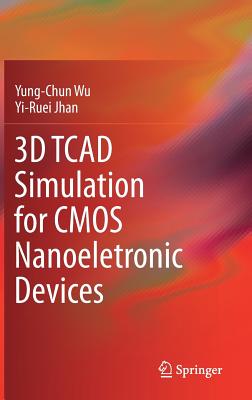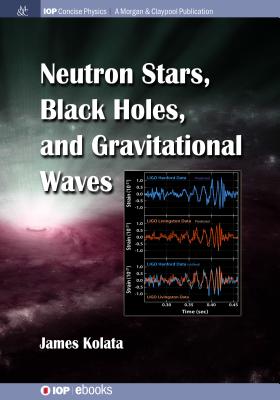3D TCAD Simulation for CMOS Nanoeletronic Devices
暫譯: CMOS 奈米電子裝置的 3D TCAD 模擬
Wu, Yung-Chun, Jhan, Yi-Ruei
- 出版商: Springer
- 出版日期: 2017-07-05
- 售價: $5,260
- 貴賓價: 9.5 折 $4,997
- 語言: 英文
- 頁數: 330
- 裝訂: Hardcover - also called cloth, retail trade, or trade
- ISBN: 9811030650
- ISBN-13: 9789811030659
-
相關分類:
CMOS
-
相關翻譯:
三維 TCAD 模擬 CMOS 奈米電子元件 (3D TCAD Simulation for CMOS Nanoeletronic Devices) (繁中版)
商品描述
This book demonstrates how to use the Synopsys Sentaurus TCAD 2014 version for the design and simulation of 3D CMOS (complementary metal-oxide-semiconductor) semiconductor nanoelectronic devices, while also providing selected source codes (Technology Computer-Aided Design, TCAD). Instead of the built-in examples of Sentaurus TCAD 2014, the practical cases presented here, based on years of teaching and research experience, are used to interpret and analyze simulation results of the physical and electrical properties of designed 3D CMOSFET (metal-oxide-semiconductor field-effect transistor) nanoelectronic devices.
The book also addresses in detail the fundamental theory of advanced semiconductor device design for the further simulation and analysis of electric and physical properties of semiconductor devices. The design and simulation technologies for nano-semiconductor devices explored here are more practical in nature and representative of the semiconductor industry, and as such can promote the development of pioneering semiconductor devices, semiconductor device physics, and more practically-oriented approaches to teaching and learning semiconductor engineering.
The book can be used for graduate and senior undergraduate students alike, while also offering a reference guide for engineers and experts in the semiconductor industry. Readers are expected to have some preliminary knowledge of the field.
商品描述(中文翻譯)
本書展示了如何使用 Synopsys Sentaurus TCAD 2014 版本來設計和模擬 3D CMOS(互補金屬氧化物半導體)半導體納米電子設備,同時提供選定的源代碼(技術計算機輔助設計,TCAD)。本書所呈現的實際案例基於多年教學和研究經驗,取代了 Sentaurus TCAD 2014 的內建範例,用於解釋和分析設計的 3D CMOSFET(金屬氧化物半導體場效應晶體管)納米電子設備的物理和電氣特性模擬結果。
本書還詳細討論了先進半導體設備設計的基本理論,以進一步模擬和分析半導體設備的電氣和物理特性。本書探討的納米半導體設備的設計和模擬技術更具實用性,並且代表了半導體行業,因此可以促進開創性半導體設備、半導體設備物理學的發展,以及更具實用導向的半導體工程教學和學習方法。
本書適用於研究生和高年級本科生,同時也為半導體行業的工程師和專家提供參考指南。讀者預期具備該領域的一些初步知識。
作者簡介
Dr. Yung-Chun Wu received his B.S. degree in Physics from National Central University in 1996, his M.S. degree in Physics from National Taiwan University in 1998, and his Ph.D. from National Chiao Tung University, Taiwan, in 2005. From 1998 to 2002, he was an assistant researcher at National Nano Device Laboratories, Hsinchu, Taiwan, where he was primarily engaged in research on single electron transistor and electron beam lithography technology. In 2006, he joined the Department of Engineering and System Science, National Tsing-Hua University, Hsinchu, Taiwan, where he is currently working as an associate professor. He teaches 3D CMOS semiconductor nanoelectronic devices by TCAD simulation course for seven years. His research interests include nanoelectronic devices and 3D TCAD simulation, flash memory devices, and solar cells. He has published 56 international SCI papers on nanoelectronic devices.
作者簡介(中文翻譯)
吳永俊博士於1996年獲得國立中央大學物理學學士學位,1998年獲得國立台灣大學物理學碩士學位,並於2005年獲得國立交通大學博士學位。從1998年到2002年,他在台灣新竹的國家奈米元件實驗室擔任助理研究員,主要從事單電子晶體管和電子束光刻技術的研究。2006年,他加入國立清華大學工程與系統科學系,目前擔任副教授。他教授3D CMOS半導體奈米電子裝置的TCAD模擬課程已有七年。其研究興趣包括奈米電子裝置、3D TCAD模擬、快閃記憶體裝置和太陽能電池。他在奈米電子裝置方面發表了56篇國際SCI論文。
詹怡瑞於2010年獲得國立東華大學物理學學士學位,2012年獲得國立清華大學工程與系統科學碩士學位,並於2015年獲得國立清華大學工程與系統科學博士學位。2016年,他在畢業後加入台灣積體電路製造公司(TSMC)的研究與開發部門。他的研究興趣包括奈米電子MOSFET裝置、TCAD模擬和非揮發性記憶體裝置。他是《3D TCAD Simulation for CMOS Nanoelectronic Devices》一書的作者。






























